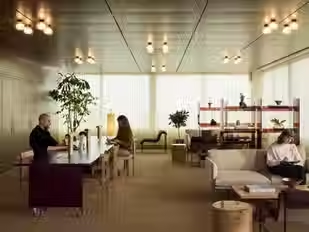We find offices that work for you.
We combine hands-on service with industry expertise to match you with the ideal office in London and the UK - fast, flexible and tailored to you.

Find serviced, managed or coworking spaces
Conventional and long term leases
Design, build and fit out solutions
Workspace consulting and evaluations
Finding your
next office,
the nativ way
At nativspace, everything we do starts with you — your team, your goals, your way of working.
We’re here to cut through the noise of the flexible office market and make the search simple, strategic, and stress-free.
No generic listings. No landlord-led agendas. Just clear, expert advice and handpicked spaces that actually work for you.
Whether you’re scaling, relocating, or looking for a smarter way to work — we’re your partner from first browse to move-in day (and beyond).
Smarter spaces. Sharper support. Always client-first.
It’s the nativ way.
Let's talk
Tell us what you need, and we’ll handpick office spaces that actually suit your team's needs.
Take a peek
Like what you see? Let’s take a look. Book a tour with our team, and let us handle the rest.
Seal the deal
Found the one? We’ll deal with the paperwork, smooth out the details, and we'll even move you in.
Why choose
nativspace
Industry expertise
With 25+ years of real estate and office industry experience, we know the market, and how to find the best space for you.
End-to-end support
Whether you need relocation support, design, build and fit out or just after recommendations on the best coffee machines, we've got you covered.
Client-first approach
We’re not here to push spaces. We’re here to listen. Everything we do is designed around your team, goals, and your next move.
Nation-wide reach
From central London to the suburbs and beyond, we’ve got access to thousands of spaces across the UK, wherever your team needs to be.











